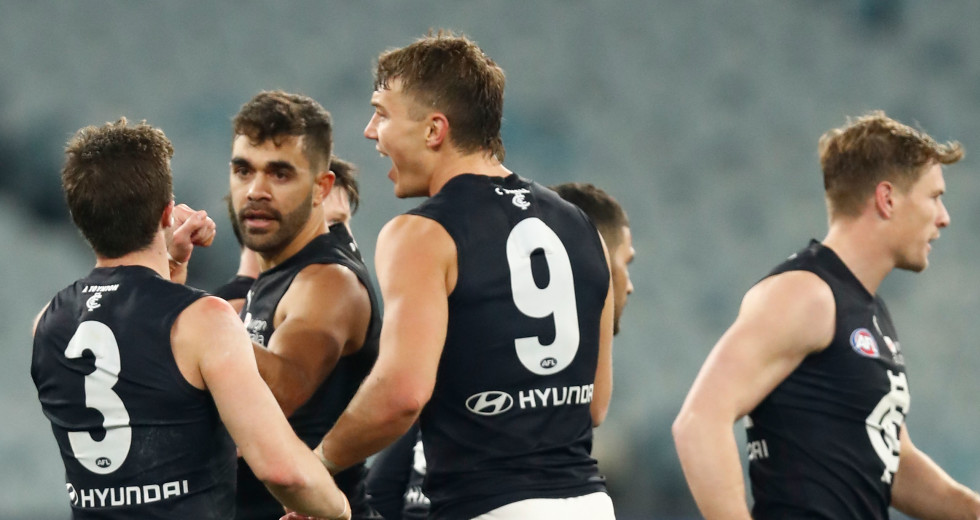AFL as a game has changed a lot recently via umpiring rules designed to reduce stoppages and too many players around the ball. Why Sydney keeps falling short. The evolution over the years of AFL players no longer playing fixed positions on the field had led to scenes of overcrowding and rugby like scrums. The games in the early 2000s were fierce, intense but largely low scoring affairs. Sydney matches under coach Paul Roos were particularly like this. These types of games suited the Swans’ blue collar midfield group who were not as skilled as some but tough and hard in and under at scrimmages.
AFL Team Sydney Swans Slipping in 2023
Many past player administrators and media commentators hated this evolution of AFL away from the high scoring, high marking, and more free flowing game they knew. Eventually, rules and interpretations were changed to favour the ball carrier over the tackler, the 6-6-6 rule at centre bounces, and the stand rule for those on the mark. Overall, these rule changes have been effective in lessening the overcrowding around the ball and reducing stoppages. There are, however, always side effects from any amendments to the governing rules of the game. Tacklers are rarely rewarded for their efforts under the new interpretation of holding the ball. Thus, we have seen a glut of dangerous tackles as players seek to liberate the ball from the grasp of their opponent.

New Rules In AFL & Sydney
Yes, at the same time the game has been reducing overcrowding around the ball new rules protecting the players’ heads have been forced upon the AFL, as a sport. A dangerous brain condition, CTE, caused by repeated concussions has emerged, having been identified by medical scientists in America. Legal action and suits are piling up like the players used to in stacks-on-the-mill. Dangerous bumps and tackles that cause injuries to the head have been outlawed by the AFL rules officials. This has resulted in a spate of players being suspended from play for weeks for acts which were formerly a rich part of the game.

Thus, as you can see, the game called AFL has changed a good deal over the last 5 to 10 years. Coaches and the players are constantly having to reinvent themselves and their game plans to adapt to the changing landscape. If you have a look at AFL players in 2023 you will see that they are incredible lean and muscled more like sprinting marathon runners than previously shaped. Physical conditioning managers at each club have a team of sports’ scientists who wield a considerable amount of day-to-day power in regard to the players. They are responsible for keeping the players fit and physically healthy. Lots of soft tissue injuries are the bane of these managers and the clubs that employ them. Programmes designed to reduce these and keep fit players on the field are very important to the success of AFL clubs. Weight programmes and such like are the responsibility of these high-performance directors.
There are very few heavily muscled blokes who look like brick shithouses left in AFL.

Youth is the general policy at AFL clubs in the 2020s with fewer players in their 30s staying on lists than previously. Experience counts for less than the breakneck speed required to play the game in this day and age. AFL has never been more of a running game than it is now. Still, it takes strength and speed to win the ball out of the centre. Midfielders with powerful thighs, like world class sprinters, able to collect ball and power out of the stoppage are worth their weight in gold. The game needs both inside and outside players, although inside players must still be very quick when required.

Sydney has a current crop of talented but very young AFL players who can move the ball skilfully at great speed from one end of the ground to the other. Handpassing and short passes setting up chains of movement down the centre corridor toward their forwards and their goals are exciting to watch. Thus, when things are going right in this regard it is a real joy to observe. The dazzling displays by Gulden, Warner, McInerny, and Campbell are a delight to witness. Overall, the club and coaches would be happy with the development of these young stars. However, this season has shown that this movement can be curtailed by close checking pressure and the team’s defensive skills are often deficient.
The Swans have been unable to maintain elite pressure levels for four quarters.
It seems to me, watching AFL teams at play in 2023, that a successful game plan is a balance between offence and defence. Too much offence can result in easy scoring for the opposition on the counterattack. Too much defence can mean an inability to score. Getting it right is no easy task consistently. Pressure at the source around the ball carrier makes effective distribution tough for the attacking team. Can a team maintain this exhaustive level of pressure for the full 120 minutes?
One thing doesn’t change that much and that is you must win the ball out of the centre and at stoppages to get things moving in the right direction.

Why Sydney keep falling short in matches has little to do with heart and more to do with structure and personnel. I am not sure if there is a workable plan B from Longmire and co in regard to the team. It is not a premiership winning formular in its current guise. Perhaps, it is simply because the players are still too young and things will sort themselves out once they each have 80 to 100 games on their belt. Getting back to body shapes and sizes I consider that the Swans are too lightly framed at the moment. Whether this is just down to age or is, as I reckon, something largely to do with design by the conditioning managers – it is a problem. The Swans too frequently get beaten around the ball at stoppages and centre bounces. Too easily pushed off the ball by bigger and stronger opponents. Their ruck stocks have been thin for at least a decade, which speaks of not valuing these big men and the role they play.
Modern AFL is all about running and speed, thus, it is easy to see lumbering ruckmen as dinosaurs of another era. Physical strength plays its part, however, and can really come to the fore in the right conditions and circumstances.

The Swans have a plethora of lightly framed quick ball users like Nick Blakey, Jake Lloyd, Chad Warner, Braeden Campbell, and Justin McInerny. They lack strong bodies like Luke Parker, Callum Mills, and Isaac Heeney around the ball. James Rowbottom is a great tackler and defensive pressure player. Ollie Florent is another strong half back who breaks the lines. The Swans need another strong inside midfielder or two. They need more of a physical presence in matches. Buddy Franklin provides this in the forward line when he plays but he is at the end of his playing days. They have missed Sam Reid this season for this reason and his pinch hitting in the ruck.
Where are the big men providing muscle in the clinches for the Sydney Swans?
Game plans must reflect the qualities inherent within the available playing roster. It is of limited use having a high defensive pressure team philosophy if you haven’t the muscle to effectively execute it. Too many times we see light weight Sydney players being brushed aside in broken tackles and ineffective front on contact. It has been a season of inadequate defenders who are too short and incapable of defending. Goals have been too easily scored against the Swans in 2023 despite the enormous amount of heart shown by the players. Yes, injuries have cruelled their chances for large parts of the season. But where is the development of players like Lewis Melican and other big men?
Where have all the big men gone at the Swans?
©HouseTherapy
